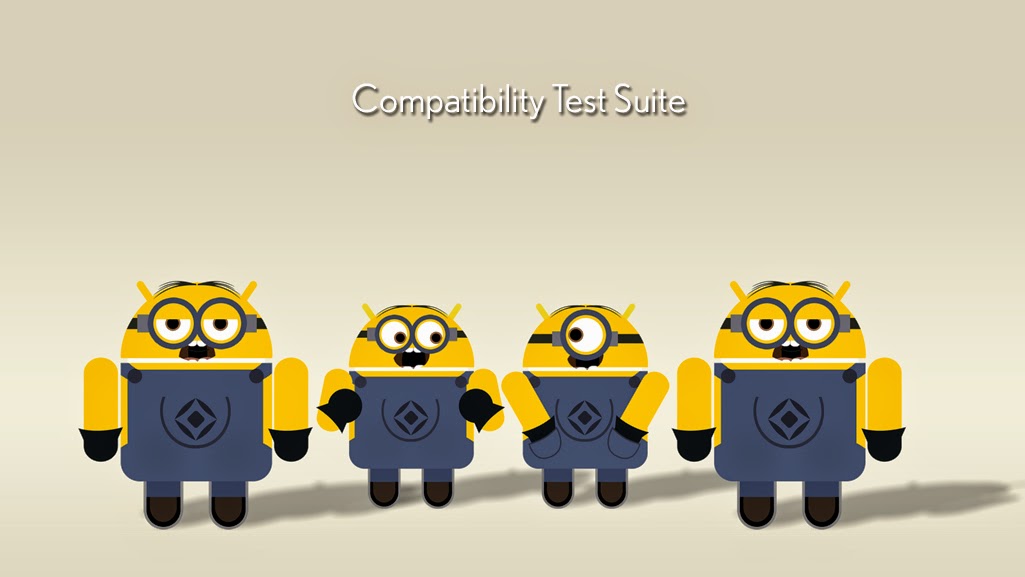Code Conventions for the Java Programming in Android
Readability
Purpose
of this lesson:
- Human
readability is extremely important.
- Especially
important factors: Naming, indentation, conventions.
Humans must be able to read the programs
Source code is read by both the
compiler, which doesn't care about your writing style, and people, who care
enormously about your writing style.
ALL programmers insist that
certain rules be followed. Some of the most important are:
- Indentation. Statements which are contained within
something else (a class, a method, a loop, etc) must be indented on
indentation amount to the right. There are several styles for this; use
one of them.
- Meaningful
names. Variables,
methods, classes, etc must be given names that mean something to the
reader. Use names likea, b,
and c only when there is no inherent
meaning in a variable -- it's just an abstract number.
See Names for a more detailed discussion. - Conventions are important to follow. There are
standard naming, formatting, documentation, and usage conventions for
Java. the organization you work for may have additional conventions. Use
of these conventions makes program source code much easier for others to
read.
Who's going to read your code?
Instructor. If you're taking a programming course your
instructor will care a lot about the indentation and meaningful names. Some
instructors have a specific class standard for formatting your program. Others
allow a range of standards. None allow chaotic code formatting.
Other programmers. If you work on a project that will ever
involve other programmers, eg, for maintenance, you must write in a
conventional style. Multi-programmer projects often establish a set of
standards for all programmers on the project.
Yourself. Surprisingly many student programs use
meaningless, deceptive, or multiple-use variable names. When asked what value
is in that variable, they are often unable to tell me. Variable names should
mean something clear to to the reader.
Tabs (no) or spaces (yes) for indentation
The problem with tabs is that there is no single
definition of how much horizontal space a tab takes, so what you see in your
program may be (and often is) very different from what I see when I look at
your program. The indentation may be consistent, which isn't so bad, but if you
tab to the comments then it usually doesn't work so well when I look at it. And
the worst is mixing tabs and spaces because a change in the tab size guarantees
things will not be correctly aligned. The programming convention for Java is to
use 4 spaces.
Names
Names should be meaningful and follow conventions
Source code is read by the
compiler, which doesn't care about your writing style, and people, who care
enormously about the readability of your code. To be readable, the names should
be meaningful and they should follow the Java conventions for capitalization and use of the
underscore.
Meaningful names
Variables, methods, classes, etc
must be given names that mean something to the reader (temperature, velocity, ...). Avoid names
likea, b, and c unless they are truly without special
meaning.
I worked with someone who claimed
he couldn't think of meaningful variable names, so used v1, v2, v3, ... He was quite smart, but
his programs were a nightmare to read. Fortunately, he soon moved into
management.
Sadly, I must admit that some of
my own old programs have mysterious names like
nbrt, which
must have been an abbreviation for something. Using abbreviations isn't
necessarily bad, but they must either be commonly understood or documented in
comments where the variable is declared.
Single use. Do not
use a variable for more than one purpose. Local variables are very cheap so you
should always declare a new variable, rather than reuse one for more than one purpose.
Language rules
Identifiers, which
is what names are usually called in programming
languages, must obey the rules of the particular programming language you are
using.
Java identifiers start with a letter or underscore and may be
followed by zero or more lower case or upper case letters, decimal digits, or
underscore characters. Technically the dollar sign is also allowed, but should
never be used because it may conflict with compiler-generated internal
identifiers.
Conventions
In addition to being legal,
programmers expect identifiers to follow standard conventions. These
conventions often vary somewhat from language to language. The standard Java
conventions are explained below. Your organization (or instructor) may have
additional naming conventions.
Names consisting of multiple words
Because blanks can't be used in
identifiers, multi-word names are handled by using camel case in Java, or separating the words with
underscores in some other languages (eg Ruby).
Camel case marks the start of a new word by writing the
first letter in upper case.
double dailyAverage;
int maximumNumberOfSunnyDays;
A popular alternative to camel
case in some languages is to separate the words with an underscore. Altho
underscores are a good convention, they won't be accepted in Java programs,
with one exception as noted below.
Sun's conventions for Java identifiers
Use the following conventions,
which are almost universally followed in Java programs.
- Class
names (and interface
names) start with a upper case letter and are continued in camel case.
Examples:String,JOptionPane,DecimalFormat. - Variable
and method names begin with a
lower case letter and are continued in camel case.
Examples:dailyAverage,maximumNumberOfSunnyDays - Constant
names should be
entirely in upper case, with multiple words separated by underscores.
Examples:EXIT_ON_CLOSE,MILES_PER_KILOMETER.
Review questions
The following are all accepted by
the compiler without error, but they all should be changed. How?
public class celsiustofahrenheit {int maximum_temperature;static double MilesPerKilometer = 0.6;private double compute(double n) {return n * 0.000144;}



Comments
Post a Comment